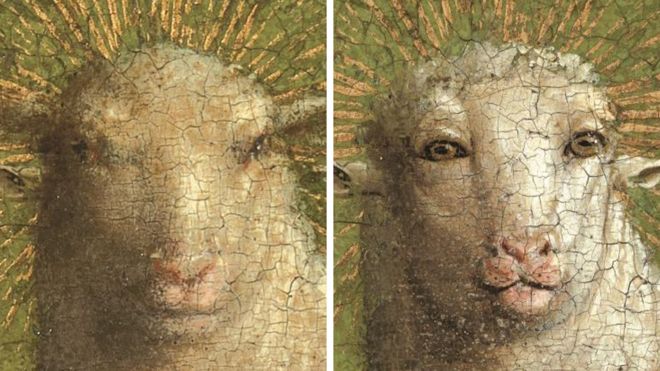After three years, the second phase of the restoration the Ghent Altarpiece triptych by Jan Van Eyck, and its central panel titled 'The Adoration of the Mystic Lamb' was completed at the end of December.
The restoration has been described as “a shock for everybody” after it revealed a depiction of the Lamb with "alarmingly humanoid" eyes.
The triptych was created in the 15th century and is regarded as the first great work of art in oil paints. The titular lamb, however, was painted over by another painter in 1550. Now, after a renovation process that lasted three years and cost millions of euros, the original lamb is made visible again.
However, reactions to the restoration, on social media and in real life, describe the eyes of the Mystic Lamb as "shocking".
Therapist: The uncovered face of the Lamb of God in the Ghent Altarpiece isn't real. It can't hurt you. The uncovered face of the Lamb of God in the Ghent Altarpiece: pic.twitter.com/RBmm48wN0w
— Dr Eleanor Janega (@GoingMedieval) January 20, 2020
https://t.co/VWHGt0fVEE pic.twitter.com/cJcSBGLRVa
— *festive* austin (@notyoursweetbab) January 20, 2020
Ludo Collin of St Bavo's Cathedral, where the painting is displayed, said that he can no longer look the lamb in the eyes, because he thinks "its human gaze is too confrontational," reports De Standaard.
The result of the restoration was "a shock for everyone," said Hélène Debois, who was in charge of the restoration of the piece, in an interview with The Art Newspaper. "This has never been seen before in an early Dutch painting. Freed from the thick layers of varnish and rough brushstrokes with which the work had been painted over, we discovered the sublime virtuosity of Van Eyck in abundance," she added.
Maïthé Chini
The Brussels Times

